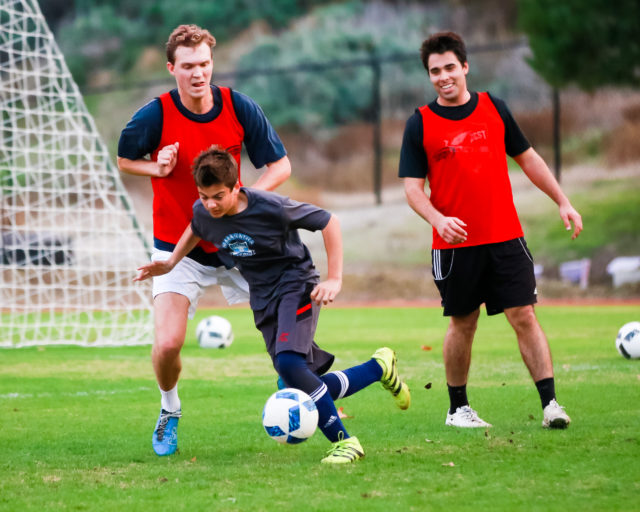US Soccer Director of Talent Identification explains why DA players can not play for their high schools.
The Boys’ Development Academy started in 2007, and the Girls’ Development Academy started in 2017. Since then, many families strongly disagree with US Soccer’s directive that DA players are not permitted to play for their high school teams while they are on a DA roster.

Mirelle van Rijbroek is the Director of Talent Identification for US Soccer. I asked her to explain US Soccer’s decision to not allow DA players to play for their high school teams.
“Imagine you get into Harvard. You go to Harvard, and you’re in a very high-level environment. There are big group projects to work on that are crucial to your education. Those projects are going to help you learn how to handle huge stressful situations later in life. But then you want to take a few months off to go to a different school for a while. Think Harvard will be OK with that? You think that’s going to be beneficial to your Harvard education? Furthermore, you’ll be leaving the members of your group without an important member of the team, while you take a few months to go do something else. It’s not fair to the group left behind. Additionally, it’s not going to be good for your own education. You can’t just leave for a few months.”

High school sports are a treasured rite of passage for teenagers and their parents. Many highly experienced club coaches confidently explain the benefits of high school soccer: Learning from different coaches, leadership opportunities, playing with and against opponents who are years older and stronger.
However, the Development Academy is not changing their policy. Van Rijbroek’s Harvard metaphor clearly exposes US Soccer’s view that the Development Academy is not an extra-curricular activity or a league.
Van Rijbroek explains:
“The Development Academy is a nation-wide programme designed to develop individual players to reach their full potential.”
“That will help every player that is is in the program. It will also improve the quality of players that eventually make up the US Men’s and Women’s National Teams. The DA is not a league. It’s a nation-wide philosophy. The DA is not a team that practices a few times a week. It’s a program that makes sure players are in the best environment for their development. US Soccer ensures DA players have at least four training sessions every week, with the best coaches available, with the most competitive matches.”

I asked Van Rijbroek what a player should do if he or she really wants to play high school soccer. She easily answered, “They should play for their school! It’s a choice. It’s an important choice, but I believe that every player needs to decide what is best for them. If they want to play for their school, they’re making that choice, and that choice means they can’t stay on their DA team. Only the players with their families can decide what the best choice is for each particular player. Of course the DA isn’t for everyone.”
“I am passionate about every player having the opportunity to reach their highest potential at whatever level that may be.”
“Basically, what you want is that every player has/gets the possibility/opportunity to play on his/her own level, ambition, talent, motivation and experience or that fits their talent, ambition, motivation. The beauty of the American soccer landscape is that there are so many opportunities for players at so many different levels to choose what is the best route for them.”
Should a player choose a club team that allows him/her to play high school soccer?
Should he/she join a DA team?
US Soccer’s viewpoint is crystal clear:
Families in the DA program understand that they are choosing to be part of a high-level, highly competitive developmental system that doesn’t include playing for their high school.
As is the case with all important decisions, there is no standard answer, and each family must decide their own individual path through the high school years.






